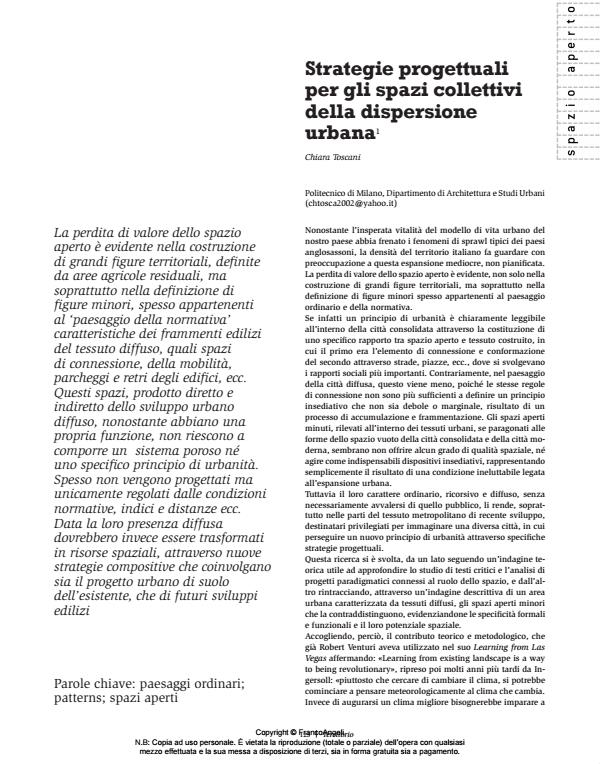Strategie progettuali per gli spazi collettivi della dispersione urbana
Titolo Rivista TERRITORIO
Autori/Curatori Chiara Toscani
Anno di pubblicazione 2014 Fascicolo 2013/67
Lingua Italiano Numero pagine 10 P. 123-132 Dimensione file 1439 KB
DOI 10.3280/TR2013-067021
Il DOI è il codice a barre della proprietà intellettuale: per saperne di più
clicca qui
Qui sotto puoi vedere in anteprima la prima pagina di questo articolo.
Se questo articolo ti interessa, lo puoi acquistare (e scaricare in formato pdf) seguendo le facili indicazioni per acquistare il download credit. Acquista Download Credits per scaricare questo Articolo in formato PDF

FrancoAngeli è membro della Publishers International Linking Association, Inc (PILA)associazione indipendente e non profit per facilitare (attraverso i servizi tecnologici implementati da CrossRef.org) l’accesso degli studiosi ai contenuti digitali nelle pubblicazioni professionali e scientifiche
The loss in the value of outdoor space is clearly seen in the construction of large ‘territorial figures’, defined by residual agricultural areas, but above all in the definition of smaller figures, often belonging to the ‘regulatory landscape’, characteristics of built fragments of the diffuse urban fabric, such as connecting spaces, mobility, parking spaces and the backs of buildings etc. Although these spaces, the direct and indirect product of diffuse urban development, have their own function, they succeed in the composition of neither a porous system, nor a specific urban principle. Often they are not planned, but only regulated by legal conditions, indexes and distances etc. However, in view of their diffuse presence they should be transformed into spatial resources by means of new strategies for composition that involve both urban plans for existing land and for future building developments.
Parole chiave:Ordinary landscapes; patterns; outdoor spaces
Chiara Toscani, Strategie progettuali per gli spazi collettivi della dispersione urbana in "TERRITORIO" 67/2013, pp 123-132, DOI: 10.3280/TR2013-067021